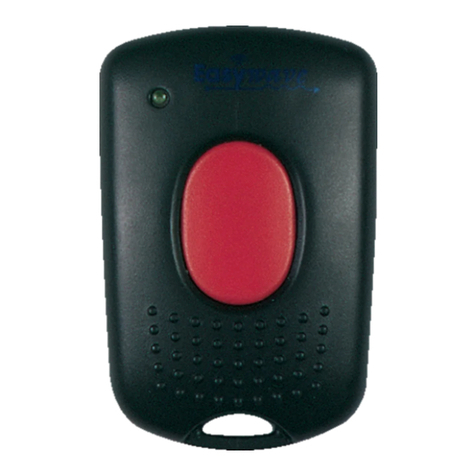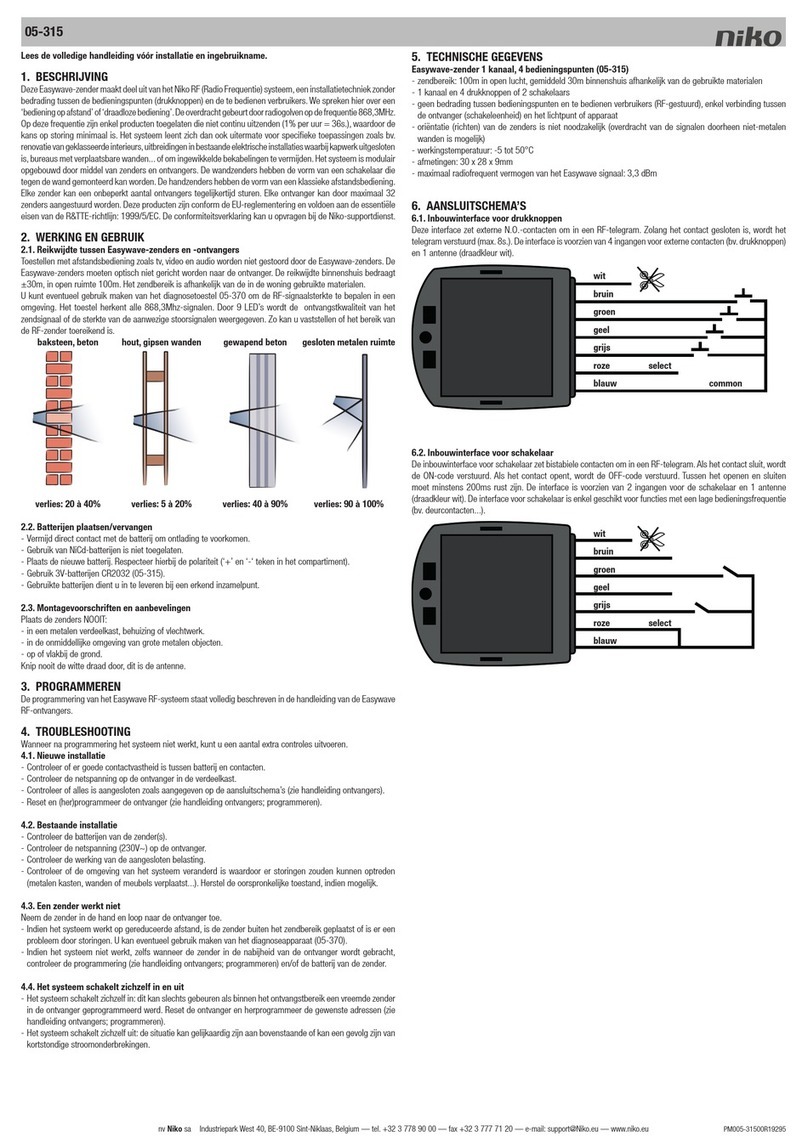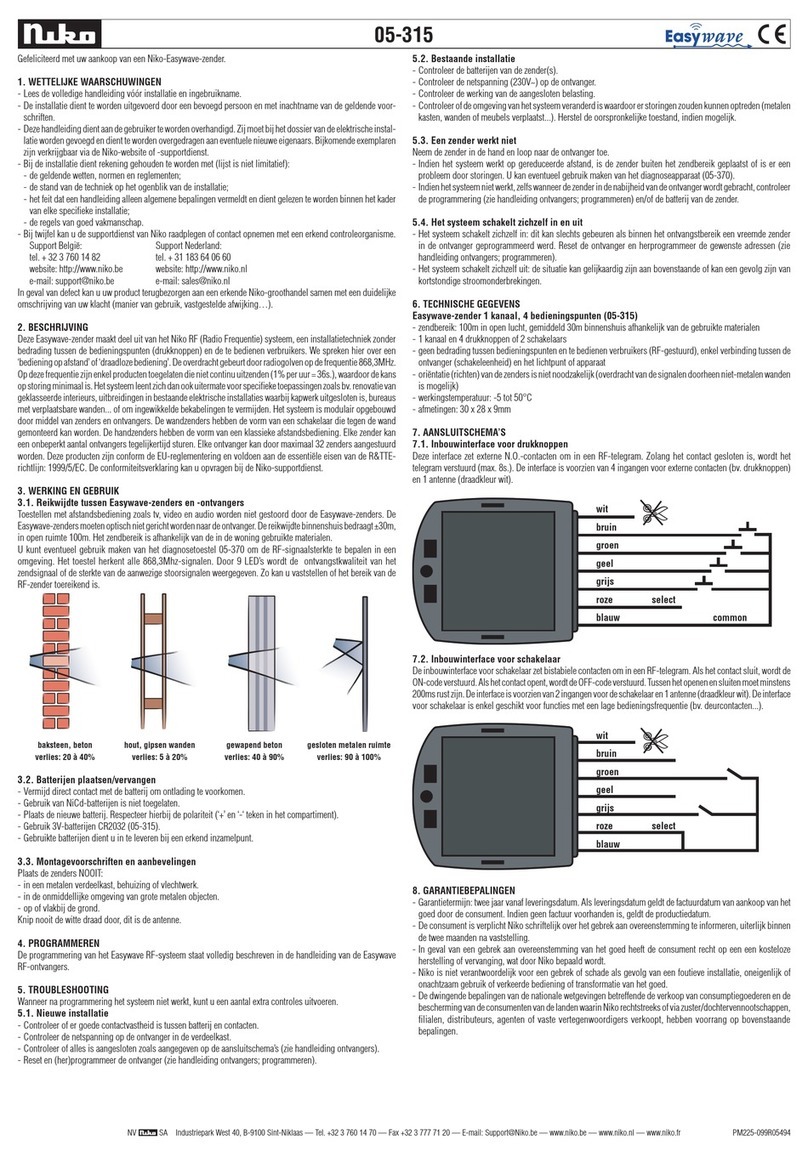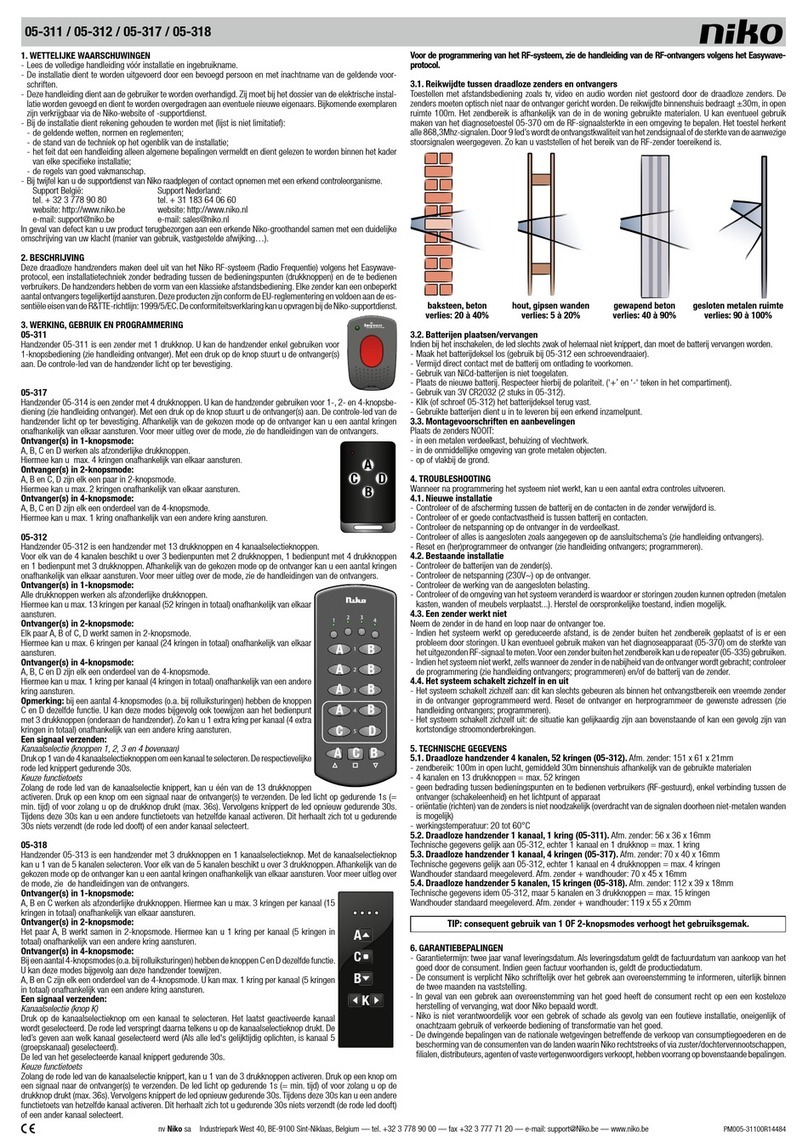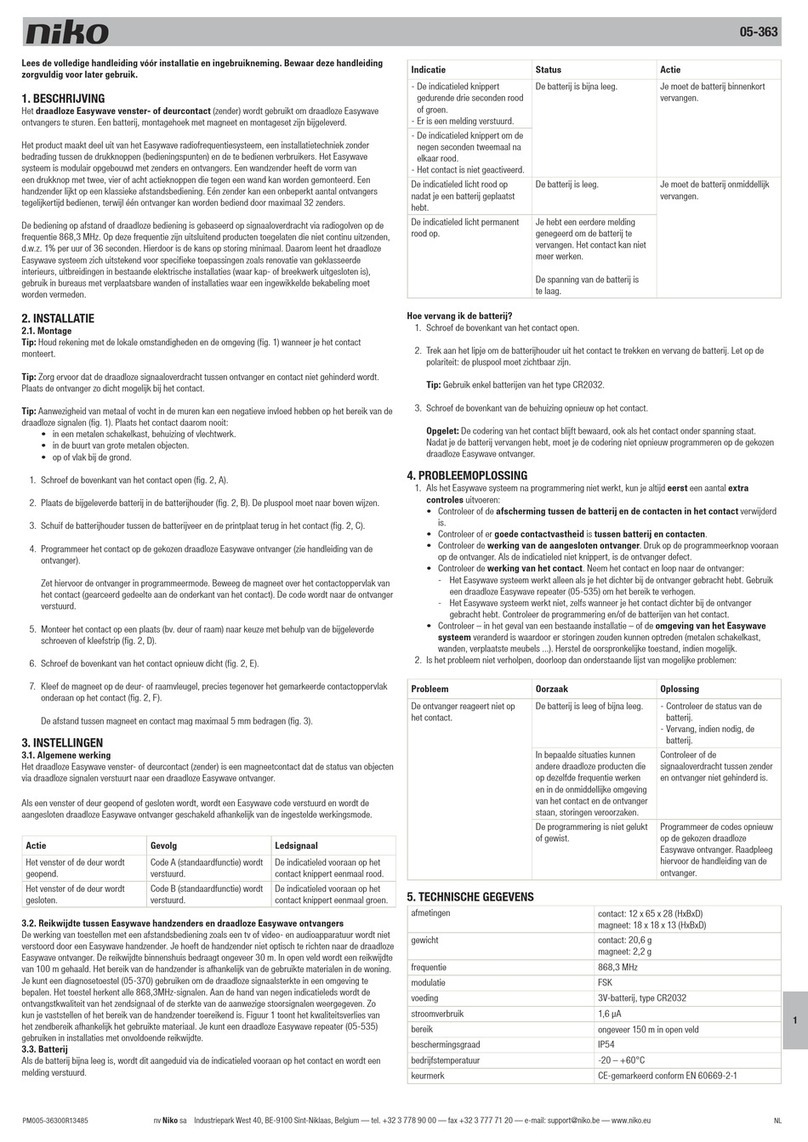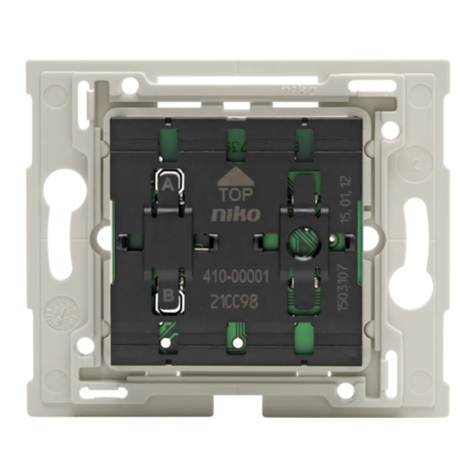
6
10-498
2. MONTAGE
Pour raccorder la caméra à l’émetteur vidéo, vous devez raccorder le centre du câble coaxial
(75Ω) pour le signal vidéo à la borne V (vidéo IN). Le blindage du câble coaxial doit être
raccordé à la masse ⊥ (Video IN).
La borne 12V (camera) est une borne de sortie 12V DC. Utilisez cette borne avec la masse
⊥ pour diriger une caméra externe (12V DC, max. 250mA). (Voir schéma de raccordement
page 8)
Si votre caméra exige d’autres caractéristiques quant à l’alimentation, vous devez vous-
même prévoir l’alimentation.
3. FONCTIONNEMENT ET UTILISATION
Lorsque l’émetteur vidéo est correctement raccordé, il peut être utilisé immédiatement pour
transmettre l’image d’une caméra externe vers un système. Aucune programmation n’est
nécessaire. Vous pouvez faire apparaître l’image de manière continue sur le moniteur ou
sur le téléviseur via le récepteur vidéo (10-499), ou vous pouvez appeler temporairement
l’image via un poste intérieur vidéo.
En combinaison avec un poste extérieur audio
Si l’émetteur vidéo est utilisé en combinaison avec un poste extérieur audio, l’image du
poste intérieur vidéo est afchée après un appel au poste extérieur.
Comme caméra supplémentaire pour un poste extérieur vidéo
Si vous souhaitez utiliser une caméra externe avec un poste extérieur vidéo, vous devez
raccorder ce dernier avec l’émetteur vidéo sur un sélecteur vidéo 10-823 (voir manuel
du 10-823).
4. CARACTERISTIQUES TECHNIQUES
Tension d’alimentation:.........................+24V DC)
Dimensions (en mm): ...........................H51 x l51 x P22
Poids:..................................................33g
Température de service:.......................de -20°C à 50°C
Consommation max. de courant:...........300mA
Sortie pour caméra:..............................12V DC; max. 250mA
Impédance d’entrée: ............................75Ω
Impédance de sortie:............................100Ω (symétrique)
Plage de réglage (amplication): ...........-3 à +9dB
Attention: l’émetteur doit être raccordé à un câble coaxial 75Ω et à un connecteur 75Ω,
an de garantir une qualité d’image optimale!
FR






